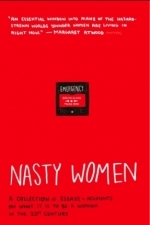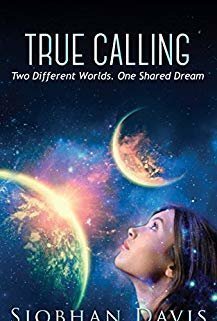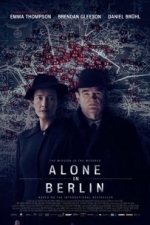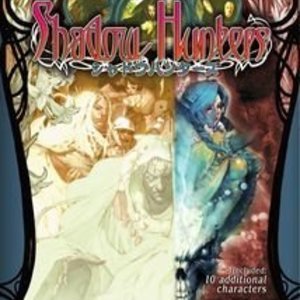Search
Search results
Eilidh G Clark (177 KP) rated Nasty Women in Books
May 13, 2017
Nasty women is hard-hitting, eye-opening, and unashamedly honest.
‘Sometimes the role model you need is not an example to aspire to, but someone who reflects back the parts of yourself that society deems fit.’ -
Becca Inglis
Nasty Women, published by 404 ink, is a collection of essays about what it is, and how it feels to be a woman in the 21st century. When I first picked up the book, I assumed, like I think most readers would, that it would be an easy book to just pick up and put down whenever I had a spare ten minutes. Wrong, I was sucked into this book right from the beginning, and read it all in a day. That doesn’t mean it was an easy read, or perhaps easy is the wrong word – it isn’t a comfortable read - and it isn’t meant to be. Nasty women is hard-hitting, eye-opening, and unashamedly honest.
The book opens with ‘Independence Day’ by Katie Muriel. A story of mixed race and identity in Trump’s America, Muriel discusses her experience of inter-family racism, heightened by political differences, ‘This is not the first, nor is it the last family divide Trump will leave in his wake, but I refuse to think of him as some deity who stands around shifting pieces on a board in his golden war room.’ The anger in this piece is clear, but it is the rationalism and clarity of the writer that speaks volumes. Race, racism and xenophobia, is a prominent feature in these stories. Claire L. Heuchan, for example, talks about ‘Othering’ a term that readers will see repeatedly in this book, ‘Scotland,’ she writes, ‘is a fairly isolating place to be a black woman.’
Survival is a key trope in Nasty Women. Mel Reeve, in ‘The Nastiness of Survival,’ talks about being a survivor of rape and emotional abuse, ‘I do not fit the ‘right’ definition of someone who has been raped.’ This statement alone is filled with irony.
I was particularly drawn to Laura Waddell’s essay, ‘Against Stereotypes: Working Class Girls and Working Class Art.’ Laura talks about the difficulty of both gender and class inequality, and, in particular, the lack of working class writers and working class fiction being published, ‘I have read a lot of fiction’ she says, ‘I have read almost none from housing estates such as the one I grew up on. These stories are missing, from shelves, and from the record.’ As a Scottish fiction writer from a working-class background myself, these words resonate deeply.
Alice Tarbuck’s ‘Foraging and Feminism: Hedge-Witchcraft in the 21st Century’, is almost fun to read in a deeply devastating way. There is a desperate tone in this piece, and a desperate need to escape society. ‘There is beauty and bounty around us if we look for it, and perhaps that is all the magic we need. Or perhaps, what we need is real magic, whether that comes in the form of resistance and community or the form of blackthorn charms and skullcap tinctures, and howling to the moon.
I loved this book. This book gives women a voice. And it is loud! Well done 404 Ink, and all the contributors, for bravely breaking the silence.
Becca Inglis
Nasty Women, published by 404 ink, is a collection of essays about what it is, and how it feels to be a woman in the 21st century. When I first picked up the book, I assumed, like I think most readers would, that it would be an easy book to just pick up and put down whenever I had a spare ten minutes. Wrong, I was sucked into this book right from the beginning, and read it all in a day. That doesn’t mean it was an easy read, or perhaps easy is the wrong word – it isn’t a comfortable read - and it isn’t meant to be. Nasty women is hard-hitting, eye-opening, and unashamedly honest.
The book opens with ‘Independence Day’ by Katie Muriel. A story of mixed race and identity in Trump’s America, Muriel discusses her experience of inter-family racism, heightened by political differences, ‘This is not the first, nor is it the last family divide Trump will leave in his wake, but I refuse to think of him as some deity who stands around shifting pieces on a board in his golden war room.’ The anger in this piece is clear, but it is the rationalism and clarity of the writer that speaks volumes. Race, racism and xenophobia, is a prominent feature in these stories. Claire L. Heuchan, for example, talks about ‘Othering’ a term that readers will see repeatedly in this book, ‘Scotland,’ she writes, ‘is a fairly isolating place to be a black woman.’
Survival is a key trope in Nasty Women. Mel Reeve, in ‘The Nastiness of Survival,’ talks about being a survivor of rape and emotional abuse, ‘I do not fit the ‘right’ definition of someone who has been raped.’ This statement alone is filled with irony.
I was particularly drawn to Laura Waddell’s essay, ‘Against Stereotypes: Working Class Girls and Working Class Art.’ Laura talks about the difficulty of both gender and class inequality, and, in particular, the lack of working class writers and working class fiction being published, ‘I have read a lot of fiction’ she says, ‘I have read almost none from housing estates such as the one I grew up on. These stories are missing, from shelves, and from the record.’ As a Scottish fiction writer from a working-class background myself, these words resonate deeply.
Alice Tarbuck’s ‘Foraging and Feminism: Hedge-Witchcraft in the 21st Century’, is almost fun to read in a deeply devastating way. There is a desperate tone in this piece, and a desperate need to escape society. ‘There is beauty and bounty around us if we look for it, and perhaps that is all the magic we need. Or perhaps, what we need is real magic, whether that comes in the form of resistance and community or the form of blackthorn charms and skullcap tinctures, and howling to the moon.
I loved this book. This book gives women a voice. And it is loud! Well done 404 Ink, and all the contributors, for bravely breaking the silence.
Eleanor Luhar (47 KP) rated True Calling in Books
Jun 24, 2019
This was free in the Amazon Kindle store and I thought it looked pretty cool, so I downloaded it a few months ago. Despite being just 369 pages long, it took me a shockingly long time to read...
Ariana is now a citizen of Novo, where only the fittest humans were transported after the near-destruction of planet Earth. From very early on, we are introduced to Zane through Ari's dreams - but she has no idea who he is, or why she can see him in her sleep. We don't discover Zane's identity until much further through the book.
A matchmaking system is set up for all eligible young people, taking the name of "The Calling." Ari realises her feelings for the popular Cal Remus, and is luckily given the opportunity to be matched with him. The whole deal with "The Calling" reminds me very much of books such as The Selection and ?Matched.
Things seem to be going pretty well (despite the fact that Ariana is appalled at the way the government is choosing who can love who) until Ariana's father disappears and leaves behind some vital information. Suddenly, Ari isn't sure whether Cal can really be trusted, and Zane is beginning to contact her directly through her mind.
A small section of this book takes place back on Earth, told from Zane's perspective. He's working for an underground resistance movement, and is still infatuated with Ariana. He gets training to try and help him communicate with her, and Ariana's father has bestowed a dying wish upon him; to keep Ari away from Cal.
Things get pretty complicated, and the love triangle is both predictable and not at the same time. Ari doesn't remember how much she loved Zane, but can sense that there was some emotion there. Cal's father is clearly opposed to his son being associated with Ariana, and is also a despicable man in himself. There are even hints as to Cal being untrustworthy, which was something I didn't actually expect.
It's kind of a typical dystopian YA novel, but it does have some good twists. My main problem was with the lack of time-keeping; I couldn't tell whether things happened over a course of a few days or multiple months. Even if the time-frame was specified in some places, it still didn't feel like it passed in the intended way.
Another thing is that the characters spoke in a rather unnatural language. Extravagant words were unnecessarily used, coupled with overly-simple phrases. It just sounded wrong.
It took me a long time to read a relatively short book, which is always a bad sign. It wasn't painfully hard to read, but I wasn't really begging to read on either. That being said, I read a little into the first chapter of the sequel, Beyond Reach, which is included at the end of this ebook, and I am rather curious as to what's going on. Still, I don't know if I'm willing to spend any money on it.
So this wasn't a great book, but it wasn't bad. Some parts felt as though the author was trying a bit too hard to make the book seem more professional, which always irritates me. I think 2.5 stars is an appropriate rating for this.
Ariana is now a citizen of Novo, where only the fittest humans were transported after the near-destruction of planet Earth. From very early on, we are introduced to Zane through Ari's dreams - but she has no idea who he is, or why she can see him in her sleep. We don't discover Zane's identity until much further through the book.
A matchmaking system is set up for all eligible young people, taking the name of "The Calling." Ari realises her feelings for the popular Cal Remus, and is luckily given the opportunity to be matched with him. The whole deal with "The Calling" reminds me very much of books such as The Selection and ?Matched.
Things seem to be going pretty well (despite the fact that Ariana is appalled at the way the government is choosing who can love who) until Ariana's father disappears and leaves behind some vital information. Suddenly, Ari isn't sure whether Cal can really be trusted, and Zane is beginning to contact her directly through her mind.
A small section of this book takes place back on Earth, told from Zane's perspective. He's working for an underground resistance movement, and is still infatuated with Ariana. He gets training to try and help him communicate with her, and Ariana's father has bestowed a dying wish upon him; to keep Ari away from Cal.
Things get pretty complicated, and the love triangle is both predictable and not at the same time. Ari doesn't remember how much she loved Zane, but can sense that there was some emotion there. Cal's father is clearly opposed to his son being associated with Ariana, and is also a despicable man in himself. There are even hints as to Cal being untrustworthy, which was something I didn't actually expect.
It's kind of a typical dystopian YA novel, but it does have some good twists. My main problem was with the lack of time-keeping; I couldn't tell whether things happened over a course of a few days or multiple months. Even if the time-frame was specified in some places, it still didn't feel like it passed in the intended way.
Another thing is that the characters spoke in a rather unnatural language. Extravagant words were unnecessarily used, coupled with overly-simple phrases. It just sounded wrong.
It took me a long time to read a relatively short book, which is always a bad sign. It wasn't painfully hard to read, but I wasn't really begging to read on either. That being said, I read a little into the first chapter of the sequel, Beyond Reach, which is included at the end of this ebook, and I am rather curious as to what's going on. Still, I don't know if I'm willing to spend any money on it.
So this wasn't a great book, but it wasn't bad. Some parts felt as though the author was trying a bit too hard to make the book seem more professional, which always irritates me. I think 2.5 stars is an appropriate rating for this.

DEAD TRIGGER 2: FIRST PERSON ZOMBIE SHOOTER GAME
Games and Entertainment
App
BEST MOBILE ZOMBIE SHOOTER EVER * App Store - Best of 2013* * 50 Million survivors from all over the...

myETraining
Sports and Health & Fitness
App
Turn your smartphone or tablet into a personal trainer: ELITE's myETraining App is a new and...
Bob Mann (459 KP) rated Alone in Berlin (2017) in Movies
Sep 29, 2021
Small Rebellions.
Once again, World War II turns up another true story of quiet valour to turn into a motion picture. At a time when Trump is pontificating about so called “fake news”, here is a timely tale from history which centres on the battle against genuinely fake news: the Nazi propaganda machine.
After losing their only son in the French campaign, Berliners Otto (Brendan Gleeson,”Harry Potter and the Goblet of Fire”) and Anna (Emma Thompson, “Saving Mr Banks“) turn against the regime and in repeated acts of rebellion Otto laboriously hand writes subversive postcards to leave in office blocks around Berlin.
Resistance is futile. Otto (Brendan Gleeson) and Anna (Emma Thompson) out on a new mission.
Out to catch him is local police investigator Escherich (Daniel Brühl) but in an age before CCTV that’s no easy task and with increasing SS pressure the stakes for Escherich steadily increase. For Otto and Anna, the stress is there but both are resigned to their fate: with their son stolen from them for an unjust cause they are an island of indifference in an unholy land. Both are ‘alone in Berlin’.
Daniel Brühl as police detective Escherich getting more than he bargained for from the SS.
After 70 years it still chills the blood to see German locations decked out in Nazi regalia, but one of the joys of this film is this rendering of life in wartime Berlin: starting with jubilation at German progress prior to D-Day and turning to despair and genuine danger as the tide turns towards 1945. In a pretty bleak film there are touches of black comedy now and then: Otto’s carpentry company is being encouraged “by the Fuhrer” to double and triple their output… of coffins.
A (very clean) Berlin, decked out with Nazi regalia.
More joy comes from the star turns of Gleeson and Thompson, both of who deliver on their emotionally challenging roles. Gleeson in particular makes a very believable German with a sour demeanor and a steely determination. But the star acting turn for me goes to the wonderful Daniel Brühl (“Rush“) as the tormented police detective, bullied into an ethical corner by the SS. The finale of the film – whilst not seeming quite believable – makes for a nicely unexpected twist.
The Nazi Womens’ League out on another fund-raising sweep, providing Thompson with one of her best scenes in the film with an Oberführer’s wife.
Based on a novel by Hans Fallada, the lead writing credits for the piece are shared between Achim von Borries and the director Vincent Perez – in a rare directorial outing for the Swiss actor. The script exudes a melancholic gloom and at times expresses beautifully both the grief and love shared by this older couple. But some of the dialogue needs more work and we don’t see enough of Thompson in the early part of the film where her motivations should be being developed. This rather comes down to a lack of focus by the director. While the primary story of the card distribution is slight, it is compelling and a detour into a sub-story about an old Jewish lodger living upstairs is unnecessary and detracts from the overall story arc. I would have far preferred if the running time had been a tight 90 minutes just focused on Otto’s mission. One final comment on the script: did I mishear that Anna claimed to have a 6 year old child during an air raid scene? I know Emma Thompson looks great for her age, but….
Otto and Elise Hampel – the real life characters on which the film’s Otto and Anna Quangel were based.
I can’t finish this without commending the beautiful piano score of Alexandre Desplat. From the first note I knew it was him – he has such a characteristic style – and his clever use of the score complements the film exquisitely. “Small” films like this tend to rather disappear into the woodwork for Oscar consideration, but here’s a soundtrack that I think should be considered: (but what do I know… when “Nocturnal Animals” wasn’t even nominated in one of the Oscar crimes of the century!).
In summary, I found this a thoughtful and thought-provoking film, that – despite some of the mean reviews I’ve seen – I thought was well crafted and with excellent production design by Jean-Vincent Puzos (“Amour”). It will be particularly appreciated by older audiences looking for an untold story from the war, and by all lovers of fine acting performances by the three leads.
After losing their only son in the French campaign, Berliners Otto (Brendan Gleeson,”Harry Potter and the Goblet of Fire”) and Anna (Emma Thompson, “Saving Mr Banks“) turn against the regime and in repeated acts of rebellion Otto laboriously hand writes subversive postcards to leave in office blocks around Berlin.
Resistance is futile. Otto (Brendan Gleeson) and Anna (Emma Thompson) out on a new mission.
Out to catch him is local police investigator Escherich (Daniel Brühl) but in an age before CCTV that’s no easy task and with increasing SS pressure the stakes for Escherich steadily increase. For Otto and Anna, the stress is there but both are resigned to their fate: with their son stolen from them for an unjust cause they are an island of indifference in an unholy land. Both are ‘alone in Berlin’.
Daniel Brühl as police detective Escherich getting more than he bargained for from the SS.
After 70 years it still chills the blood to see German locations decked out in Nazi regalia, but one of the joys of this film is this rendering of life in wartime Berlin: starting with jubilation at German progress prior to D-Day and turning to despair and genuine danger as the tide turns towards 1945. In a pretty bleak film there are touches of black comedy now and then: Otto’s carpentry company is being encouraged “by the Fuhrer” to double and triple their output… of coffins.
A (very clean) Berlin, decked out with Nazi regalia.
More joy comes from the star turns of Gleeson and Thompson, both of who deliver on their emotionally challenging roles. Gleeson in particular makes a very believable German with a sour demeanor and a steely determination. But the star acting turn for me goes to the wonderful Daniel Brühl (“Rush“) as the tormented police detective, bullied into an ethical corner by the SS. The finale of the film – whilst not seeming quite believable – makes for a nicely unexpected twist.
The Nazi Womens’ League out on another fund-raising sweep, providing Thompson with one of her best scenes in the film with an Oberführer’s wife.
Based on a novel by Hans Fallada, the lead writing credits for the piece are shared between Achim von Borries and the director Vincent Perez – in a rare directorial outing for the Swiss actor. The script exudes a melancholic gloom and at times expresses beautifully both the grief and love shared by this older couple. But some of the dialogue needs more work and we don’t see enough of Thompson in the early part of the film where her motivations should be being developed. This rather comes down to a lack of focus by the director. While the primary story of the card distribution is slight, it is compelling and a detour into a sub-story about an old Jewish lodger living upstairs is unnecessary and detracts from the overall story arc. I would have far preferred if the running time had been a tight 90 minutes just focused on Otto’s mission. One final comment on the script: did I mishear that Anna claimed to have a 6 year old child during an air raid scene? I know Emma Thompson looks great for her age, but….
Otto and Elise Hampel – the real life characters on which the film’s Otto and Anna Quangel were based.
I can’t finish this without commending the beautiful piano score of Alexandre Desplat. From the first note I knew it was him – he has such a characteristic style – and his clever use of the score complements the film exquisitely. “Small” films like this tend to rather disappear into the woodwork for Oscar consideration, but here’s a soundtrack that I think should be considered: (but what do I know… when “Nocturnal Animals” wasn’t even nominated in one of the Oscar crimes of the century!).
In summary, I found this a thoughtful and thought-provoking film, that – despite some of the mean reviews I’ve seen – I thought was well crafted and with excellent production design by Jean-Vincent Puzos (“Amour”). It will be particularly appreciated by older audiences looking for an untold story from the war, and by all lovers of fine acting performances by the three leads.
Chris Sawin (602 KP) rated Terminator Salvation (2009) in Movies
Jun 22, 2019
In the year 2018, humans are resisting the machines Skynet created called terminators. John Connor is the man who is destined to lead the resistance. Everything John Connor knows is turned inside out when he comes across Marcus Wright. Marcus was put to death by lethal injection in 2003 for killing his brother and two cops yet here he stands today. When an all out assualt by John's superiors is declared on Skynet, John finds out that Kyle Reese (the man who would eventually become his father) has been captured and will be caught in the blast, he knows his only choice is to join forces with Marcus, rescue the human prisoners, and bring Skynet down.
Christian Bale may have been the biggest disappointment in this film. After everyone heard the sound clip of him blowing up on set at a cinematographer, everybody kind of wondered if Bale's success was getting to his head. Well, it just might have. That clip seemed to run through my mind an awful lot throughout the duration of the film. My biggest complaint was that John Connor yelled the majority of the time, even when there was no reason to. When he did talk normally, he used his Batman voice. It just didn't seem to fit since Bale is more than capable of altering his accent (Harsh Times, Rescue Dawn, The Prestige). It's an issue that was bound to come up eventually, but just didn't really click until now.
The other weak link of the film had to be the dialogue. It is incredibly cheesy at times. At the beginning of the film, one of John Connor's superiors yells, "You tell those men to respond, even if they're dead!" It just seemed to be over the top more often than not. While the dialogue was a bit on the atrocious side, the story did have one interesting element going for it. The entire film revolves around this element and is really the only new factor brought in to the Terminator franchise. While the film had its low points, I kept thinking that the film at least had this going for it. Then the ending rolled around and just completely dropped the ball.
With all the negative components of the film, there are still quite a few pieces of the puzzle that are worth mentioning. The action scenes are beyond superb. The camera always seems to be in the right spot at the right time and it isn't too close, which is a definite plus. It seems to be too close during action sequences and fighting scenes in most films these days and most of the action gets lost in the shuffle (Transformers is a good example). Being able to see everything without wondering what happened to this character or that character is a nice change. Something that should definitely happen more often. The entire scene with The Harvester is pretty phenomenal. There are also quite a few throwbacks to the first two films of the franchise. "Come with me if you want to live," and, "I'll be back," are both used in the film, Kyle Reese uses his signature weapon, a sawn off shotgun, Marcus Wright knocks the windshield out of the wrecking truck in a similar fashion the T-1000 did with the diesel in T2, John Connor cocking a gun and firing at a T-800 while being wounded much like Sarah Connor did with the T-1000 while being wounded in T2, and I'm sure quite a few more that I missed.
Sam Worthington should be getting all the attention Christian Bale is for this film. He actually makes you care about Marcus Wright despite what he's done in the past. The way he portrays his emotions and how he's done these horrible things yet is a decent guy deep down inside just makes you want to root for him. Anton Yelchin also deserves a mention. His version of Kyle Reese is pretty much spot on with how you'd imagine a younger version of Kyle Reese to act. His mannerisms, the way he talks, everything. He nailed it.
The sound was also spectacular. Sounds of huge terminators echoed off the walls and made the ground shake, helicoptor blades seemed to chop through the air in violent strokes, motorcycles screeched from one side of the theater to the other to sound like they were going right by you, and you could feel the area around you rumble whenever there was a huge explosion. The sound is definitely a huge aspect of an action film and it really delivered here.
Terminator: Salvation is worth seeing, but being a fan of the franchise and having high expectations may leave you walking away in disappointment. The film doesn't really elaborate on the war between humans and machines or really add anything to the franchise, when all is said and done. If you can somehow remember the first two films yet not compare this sequel with them while ignoring plot holes, Christian Bale's over the top performance, and cheesy dialogue, then you may be able to enjoy Terminator: Salvation to its full extent. But if you're looking for a great action film that fails to expand the Terminator mythos in any way, shape, or form, then this film delivers.
Christian Bale may have been the biggest disappointment in this film. After everyone heard the sound clip of him blowing up on set at a cinematographer, everybody kind of wondered if Bale's success was getting to his head. Well, it just might have. That clip seemed to run through my mind an awful lot throughout the duration of the film. My biggest complaint was that John Connor yelled the majority of the time, even when there was no reason to. When he did talk normally, he used his Batman voice. It just didn't seem to fit since Bale is more than capable of altering his accent (Harsh Times, Rescue Dawn, The Prestige). It's an issue that was bound to come up eventually, but just didn't really click until now.
The other weak link of the film had to be the dialogue. It is incredibly cheesy at times. At the beginning of the film, one of John Connor's superiors yells, "You tell those men to respond, even if they're dead!" It just seemed to be over the top more often than not. While the dialogue was a bit on the atrocious side, the story did have one interesting element going for it. The entire film revolves around this element and is really the only new factor brought in to the Terminator franchise. While the film had its low points, I kept thinking that the film at least had this going for it. Then the ending rolled around and just completely dropped the ball.
With all the negative components of the film, there are still quite a few pieces of the puzzle that are worth mentioning. The action scenes are beyond superb. The camera always seems to be in the right spot at the right time and it isn't too close, which is a definite plus. It seems to be too close during action sequences and fighting scenes in most films these days and most of the action gets lost in the shuffle (Transformers is a good example). Being able to see everything without wondering what happened to this character or that character is a nice change. Something that should definitely happen more often. The entire scene with The Harvester is pretty phenomenal. There are also quite a few throwbacks to the first two films of the franchise. "Come with me if you want to live," and, "I'll be back," are both used in the film, Kyle Reese uses his signature weapon, a sawn off shotgun, Marcus Wright knocks the windshield out of the wrecking truck in a similar fashion the T-1000 did with the diesel in T2, John Connor cocking a gun and firing at a T-800 while being wounded much like Sarah Connor did with the T-1000 while being wounded in T2, and I'm sure quite a few more that I missed.
Sam Worthington should be getting all the attention Christian Bale is for this film. He actually makes you care about Marcus Wright despite what he's done in the past. The way he portrays his emotions and how he's done these horrible things yet is a decent guy deep down inside just makes you want to root for him. Anton Yelchin also deserves a mention. His version of Kyle Reese is pretty much spot on with how you'd imagine a younger version of Kyle Reese to act. His mannerisms, the way he talks, everything. He nailed it.
The sound was also spectacular. Sounds of huge terminators echoed off the walls and made the ground shake, helicoptor blades seemed to chop through the air in violent strokes, motorcycles screeched from one side of the theater to the other to sound like they were going right by you, and you could feel the area around you rumble whenever there was a huge explosion. The sound is definitely a huge aspect of an action film and it really delivered here.
Terminator: Salvation is worth seeing, but being a fan of the franchise and having high expectations may leave you walking away in disappointment. The film doesn't really elaborate on the war between humans and machines or really add anything to the franchise, when all is said and done. If you can somehow remember the first two films yet not compare this sequel with them while ignoring plot holes, Christian Bale's over the top performance, and cheesy dialogue, then you may be able to enjoy Terminator: Salvation to its full extent. But if you're looking for a great action film that fails to expand the Terminator mythos in any way, shape, or form, then this film delivers.
Lee (2222 KP) rated Star Wars: Episode IX - The Rise of Skywalker (2019) in Movies
Dec 20, 2019
I have very mixed feelings following The Rise of Skywalker, the concluding chapter of not just another trilogy of Star Wars movies but also the conclusion of the Skywalker saga. Starting this trilogy, I was comforted by the familiarity presented in The Force Awakens and I felt that movie got the balance right between it's handling of the past and the introduction of new characters, scenarios and threats. But, I’m one of those people that was ultimately disappointed by The Last Jedi. Not the kind that fanboy rages about Star Wars and my entire childhood being ruined, as there are actually a lot of things I liked about it, but I do feel it deviated too much from some of the direction introduced in the previous movie and the movies prior to that. So I went into The Rise of Skywalker not quite as excited as I've been previously, but still cautiously optimistic following a trailer which managed to give me goosebumps pretty much every time I saw it.
As a final chapter, The Rise of Skywalker has a lot resting on it's shoulders. Concluding, and wrapping things up, while not completely ignoring the ideas put forth in The Last Jedi, JJ Abrams is however clearly more interested in revisiting some of his own ideas from The Force Awakens. But I felt that maybe he was relying a little too much on that familiarity aspect at times, as he tries to please everyone.
In The Rise of Skywalker, the resistance are still outnumbered by the First Order and Kylo Ren is now Supreme Leader. Meanwhile, Rey is training with Leia, becoming more confident and powerful, while Finn, Poe and Chewie are out in the Millennium Falcon gathering intel from spies. But an old threat from the past has returned, as a message goes out across the galaxy from an unknown region - Emperor Palpatine is warning of revenge, supported by a powerful fleet of ships.
To go into much more detail would involve spoilers, but lets just say that the first half of the movie involves a search to find something which is going to help them find something else, which is going to lead to the location of the emperor. The quest takes us from location to location, with the odd rescue along the way and the occasional new character popping up. Rey and Ren still have a bond which means that they can manipulate and battle each other from anywhere in the galaxy as Ren and his knights seek out Rey and her team in order to destroy them. There's a lot going on in that first half, and it all felt a bit messy. It's fair to say, I was very bored by this first half.
Around that half way mark though, the journey takes us to a world in the Endor system, where the remains of the second Death Star lies out at sea, among towering waves. It's there that an epic battle between Rey and Ren takes place, which you no doubt will have seen snippets of in the trailers or marketing material. Waves crash around them and the visuals, the choreography, the score, it all came together and really kick started the second half off for me. I still can't quite put my finger on it, but from that point on I felt a real shift (in the force?) and I began to really enjoy the rest of the movie, right up until the huge, inevitable and breathtaking final battle.
As mentioned earlier, there are certainly a lot of characters to take care of in this movie, including plenty of newcomers, all fighting for attention and screen-time. Some of the seemingly important characters introduced to us previously in this trilogy feel a bit lost at times, while we do still manage to find time for a very welcome return by Landon Calrissian. Rey and Ren are both outstanding once again and a special mention goes out to Richard E Grant, who I thought was brilliant as head of the First Order fleet, Allegiant General Pride. Scenes involving Carrie Fisher are beautifully handled, but I felt that the fan service went a little bit too far with some of the scenes involving Luke Skywalker.
The level of craftsmanship and design that goes into a Star Wars movie is always incredible and The Rise of Skywalker is no exception, elevated by a powerful John Williams score and some amazing visuals. I'm really not sure what I was expecting from this final chapter but, despite it all coming good for me in the end, I do feel slightly disappointed overall by the wildly differing halves of the movie. Still, there's nothing quite like seeing a new Star Wars movie on the big screen at Christmas time!
As a final chapter, The Rise of Skywalker has a lot resting on it's shoulders. Concluding, and wrapping things up, while not completely ignoring the ideas put forth in The Last Jedi, JJ Abrams is however clearly more interested in revisiting some of his own ideas from The Force Awakens. But I felt that maybe he was relying a little too much on that familiarity aspect at times, as he tries to please everyone.
In The Rise of Skywalker, the resistance are still outnumbered by the First Order and Kylo Ren is now Supreme Leader. Meanwhile, Rey is training with Leia, becoming more confident and powerful, while Finn, Poe and Chewie are out in the Millennium Falcon gathering intel from spies. But an old threat from the past has returned, as a message goes out across the galaxy from an unknown region - Emperor Palpatine is warning of revenge, supported by a powerful fleet of ships.
To go into much more detail would involve spoilers, but lets just say that the first half of the movie involves a search to find something which is going to help them find something else, which is going to lead to the location of the emperor. The quest takes us from location to location, with the odd rescue along the way and the occasional new character popping up. Rey and Ren still have a bond which means that they can manipulate and battle each other from anywhere in the galaxy as Ren and his knights seek out Rey and her team in order to destroy them. There's a lot going on in that first half, and it all felt a bit messy. It's fair to say, I was very bored by this first half.
Around that half way mark though, the journey takes us to a world in the Endor system, where the remains of the second Death Star lies out at sea, among towering waves. It's there that an epic battle between Rey and Ren takes place, which you no doubt will have seen snippets of in the trailers or marketing material. Waves crash around them and the visuals, the choreography, the score, it all came together and really kick started the second half off for me. I still can't quite put my finger on it, but from that point on I felt a real shift (in the force?) and I began to really enjoy the rest of the movie, right up until the huge, inevitable and breathtaking final battle.
As mentioned earlier, there are certainly a lot of characters to take care of in this movie, including plenty of newcomers, all fighting for attention and screen-time. Some of the seemingly important characters introduced to us previously in this trilogy feel a bit lost at times, while we do still manage to find time for a very welcome return by Landon Calrissian. Rey and Ren are both outstanding once again and a special mention goes out to Richard E Grant, who I thought was brilliant as head of the First Order fleet, Allegiant General Pride. Scenes involving Carrie Fisher are beautifully handled, but I felt that the fan service went a little bit too far with some of the scenes involving Luke Skywalker.
The level of craftsmanship and design that goes into a Star Wars movie is always incredible and The Rise of Skywalker is no exception, elevated by a powerful John Williams score and some amazing visuals. I'm really not sure what I was expecting from this final chapter but, despite it all coming good for me in the end, I do feel slightly disappointed overall by the wildly differing halves of the movie. Still, there's nothing quite like seeing a new Star Wars movie on the big screen at Christmas time!
Purple Phoenix Games (2266 KP) rated Shadow Hunters in Tabletop Games
Jul 24, 2021
Playing board games has enlightened me so much and given me wishes to follow career paths I would not have considered otherwise. One career I would NOT want to take on is that of a Shadow Hunter: the warriors who seek out and destroy beings from the demon realms walking in our midst. I’d rather stay blissfully ignorant to their existence and simply hope we can be friends. However, in board game worlds I will seek and destroy like a good little Shadow Hunter does.
Shadow Hunters is a hidden identity survival card game for groups of 4-8 players. Each player’s drawn persona will belong to the Shadows, the Hunters, or Neutrals (common bystanders). The goals of the players may all be completely different and the game may end at any time due to fulfilling personal agendas. Players may even win when their characters are dead!
To setup place the board on the table and randomly populate the card spaces on the board with the Area Cards. Shuffle the White Cards, Black Cards, and Hermit Cards (why didn’t they just name these the Green Cards?) into their own stacks and place them on the side of the board in their slots. Players choose their preferred colors, take the boards and pieces with that color, and place one of their wooden markers on the No Damage space on the board. The other wooden marker will be used for movement on the board Area cards. Shuffle and deal each player one Character Card to be kept secret from the other players. Determine start player and the game is ready to begin!
On a player’s turn they will be completing at least one task and then possible other tasks. First, the active player will roll both the 1d6 and 1d4 together to arrive at a number between two and 10. The player will place their marker on the matching Area card on the board. Should a player roll a seven they may choose any location other than the space they are on and move. Each location will have an action printed on its card that a player may choose to complete. These could be drawing cards from the White, Black, or Hermit decks, damaging other players, or stealing equipment cards from them. Lastly, the active player may straight up attack another player within the same Area range (the three different areas are two cards linked together, so either the card the marker shares or the one that is linked).
As soon as a character has suffered damage equal to or greater than the HP shown on their Character Card, that character dies. Once a character dies, the owning player flips the Character Card over to reveal the character and, more importantly, their faction to which they belong. If this causes one player to fulfill their character’s goals, they must announce that the game is over. If not, play continues in this fashion until a player’s goal has been achieved to end the game. This could mean the Shadow team or Hunter team wins as a group, or that one player wins alone.
Components. Oddly, this edition of Shadow Hunters is now almost 10 years old, so it fall within the “older games” group. That said, the components are still excellent quality, even by today’s standards. The cards have a faint linen finish, the cardboard components are all thick and matte finished, the wooden player markers are chunky and fun to move around. The only issues I have with components are that I wish the colors matched more on the wooden markers and the player boards. Not a huge deal, but something that makes me cringe just a little inside. The other issue I have is most definitely a personal preference: the numbers on the d4 are on the bottom and I prefer them on the top. I know, purely personal preference and I’m dumb for even mentioning it.
This is a game I love but irks my wife. And not even because she doesn’t like the game. It irks her because of how I play it. Until I use the Hermit Cards to try to help figure out which player is on my team I will certainly be attacking everyone I can every chance I get. That’s not the best way to make friends, and I get it, but I’m not taking that chance of allowing a potential opponent to get a leg up on me. That bothers my wife because many times I’m attacking my teammates. Oh well.
I have played this game so many times with different groups and have had great success with it almost every single time. It’s an easy teach, the theme makes sense, and having different end goals is something that many people can rally behind. I know there are about 3,000 hidden identity games out there, but I consider this one of the best. Even 10 years later it sill holds that sheen and gives us a little different experience than just spamming The Resistance: Avalon every time. Purple Phoenix Games gives this one a hot 17 / 24. Pick this one up if you find it in the wild and want a different feel for your hidden identity collection. I love it and you might too.
Shadow Hunters is a hidden identity survival card game for groups of 4-8 players. Each player’s drawn persona will belong to the Shadows, the Hunters, or Neutrals (common bystanders). The goals of the players may all be completely different and the game may end at any time due to fulfilling personal agendas. Players may even win when their characters are dead!
To setup place the board on the table and randomly populate the card spaces on the board with the Area Cards. Shuffle the White Cards, Black Cards, and Hermit Cards (why didn’t they just name these the Green Cards?) into their own stacks and place them on the side of the board in their slots. Players choose their preferred colors, take the boards and pieces with that color, and place one of their wooden markers on the No Damage space on the board. The other wooden marker will be used for movement on the board Area cards. Shuffle and deal each player one Character Card to be kept secret from the other players. Determine start player and the game is ready to begin!
On a player’s turn they will be completing at least one task and then possible other tasks. First, the active player will roll both the 1d6 and 1d4 together to arrive at a number between two and 10. The player will place their marker on the matching Area card on the board. Should a player roll a seven they may choose any location other than the space they are on and move. Each location will have an action printed on its card that a player may choose to complete. These could be drawing cards from the White, Black, or Hermit decks, damaging other players, or stealing equipment cards from them. Lastly, the active player may straight up attack another player within the same Area range (the three different areas are two cards linked together, so either the card the marker shares or the one that is linked).
As soon as a character has suffered damage equal to or greater than the HP shown on their Character Card, that character dies. Once a character dies, the owning player flips the Character Card over to reveal the character and, more importantly, their faction to which they belong. If this causes one player to fulfill their character’s goals, they must announce that the game is over. If not, play continues in this fashion until a player’s goal has been achieved to end the game. This could mean the Shadow team or Hunter team wins as a group, or that one player wins alone.
Components. Oddly, this edition of Shadow Hunters is now almost 10 years old, so it fall within the “older games” group. That said, the components are still excellent quality, even by today’s standards. The cards have a faint linen finish, the cardboard components are all thick and matte finished, the wooden player markers are chunky and fun to move around. The only issues I have with components are that I wish the colors matched more on the wooden markers and the player boards. Not a huge deal, but something that makes me cringe just a little inside. The other issue I have is most definitely a personal preference: the numbers on the d4 are on the bottom and I prefer them on the top. I know, purely personal preference and I’m dumb for even mentioning it.
This is a game I love but irks my wife. And not even because she doesn’t like the game. It irks her because of how I play it. Until I use the Hermit Cards to try to help figure out which player is on my team I will certainly be attacking everyone I can every chance I get. That’s not the best way to make friends, and I get it, but I’m not taking that chance of allowing a potential opponent to get a leg up on me. That bothers my wife because many times I’m attacking my teammates. Oh well.
I have played this game so many times with different groups and have had great success with it almost every single time. It’s an easy teach, the theme makes sense, and having different end goals is something that many people can rally behind. I know there are about 3,000 hidden identity games out there, but I consider this one of the best. Even 10 years later it sill holds that sheen and gives us a little different experience than just spamming The Resistance: Avalon every time. Purple Phoenix Games gives this one a hot 17 / 24. Pick this one up if you find it in the wild and want a different feel for your hidden identity collection. I love it and you might too.

Butt Lift Workout: Exercises to Tone Your Booty
Health & Fitness and Lifestyle
App
Need to get your booty in shape? This app is for you. * Simple, effective exercises & workouts...
Debbiereadsbook (1585 KP) rated His Mate by Allegiance (Lunetti Pack #3) in Books
Jul 12, 2025
steamy and deadly!
Independent reviewer for GRR, I was gifted my copy of this book.
This is book 3 in the Lunetti Pack series, and I would recommend that you books one, His Mate by Venegeance and book two, His Mate by Resistance before this one. A personal rec, is all.
I enjoyed book one, I loved book 2, but I LOVED this one!
Emilio knew that Rocco was his mate the minute they met. That kinda put his plans out, since his new husband was going to meet an unfortunate end and now his wolf would not let that happen. Rocca creeps under Emmy skin and fur and while they down and dirty quite quickly, I loved that Emmy was NOT going to bite Rocco and Rocco used his magic to bind his puppy. I loved that Rocco called Emmy puppy from the very beginning and not once did Emmy tell him to stop it!
I loved that Rocco really SAW Emmy, you know? As a witch, he didn't get the mating urge quite as bad as the shifters did, but he knew that Emmy was special, and his feelings developing super speedy was another reason that he knew.
Super smexy, and steamy! Loved that they went all in, but no biting! Rcco's power was amazing, with the wind and things and I loved that Emmy's wolf responded to that power.
Violent, too. Emilio is, after all, an assassin. But given what happens here, I think it's needed on page. Loved how Rocco responded to Emilio's trade.
Emotional, as well. Emmy is dealing with some deep emotions, after his father did what he did. And he fights Rocco all the way because of that. But once Rocco knows WHY Emmy is fighting, he understands and goes all out to make sure his puppy knows Rocco will always stand by him, and never against him.
Epilogue gives us who is next and I look forward to that one, given as Rafe and Adri have a long history!
5 full and shiny stars
*same worded review will appear elsewhere
This is book 3 in the Lunetti Pack series, and I would recommend that you books one, His Mate by Venegeance and book two, His Mate by Resistance before this one. A personal rec, is all.
I enjoyed book one, I loved book 2, but I LOVED this one!
Emilio knew that Rocco was his mate the minute they met. That kinda put his plans out, since his new husband was going to meet an unfortunate end and now his wolf would not let that happen. Rocca creeps under Emmy skin and fur and while they down and dirty quite quickly, I loved that Emmy was NOT going to bite Rocco and Rocco used his magic to bind his puppy. I loved that Rocco called Emmy puppy from the very beginning and not once did Emmy tell him to stop it!
I loved that Rocco really SAW Emmy, you know? As a witch, he didn't get the mating urge quite as bad as the shifters did, but he knew that Emmy was special, and his feelings developing super speedy was another reason that he knew.
Super smexy, and steamy! Loved that they went all in, but no biting! Rcco's power was amazing, with the wind and things and I loved that Emmy's wolf responded to that power.
Violent, too. Emilio is, after all, an assassin. But given what happens here, I think it's needed on page. Loved how Rocco responded to Emilio's trade.
Emotional, as well. Emmy is dealing with some deep emotions, after his father did what he did. And he fights Rocco all the way because of that. But once Rocco knows WHY Emmy is fighting, he understands and goes all out to make sure his puppy knows Rocco will always stand by him, and never against him.
Epilogue gives us who is next and I look forward to that one, given as Rafe and Adri have a long history!
5 full and shiny stars
*same worded review will appear elsewhere






